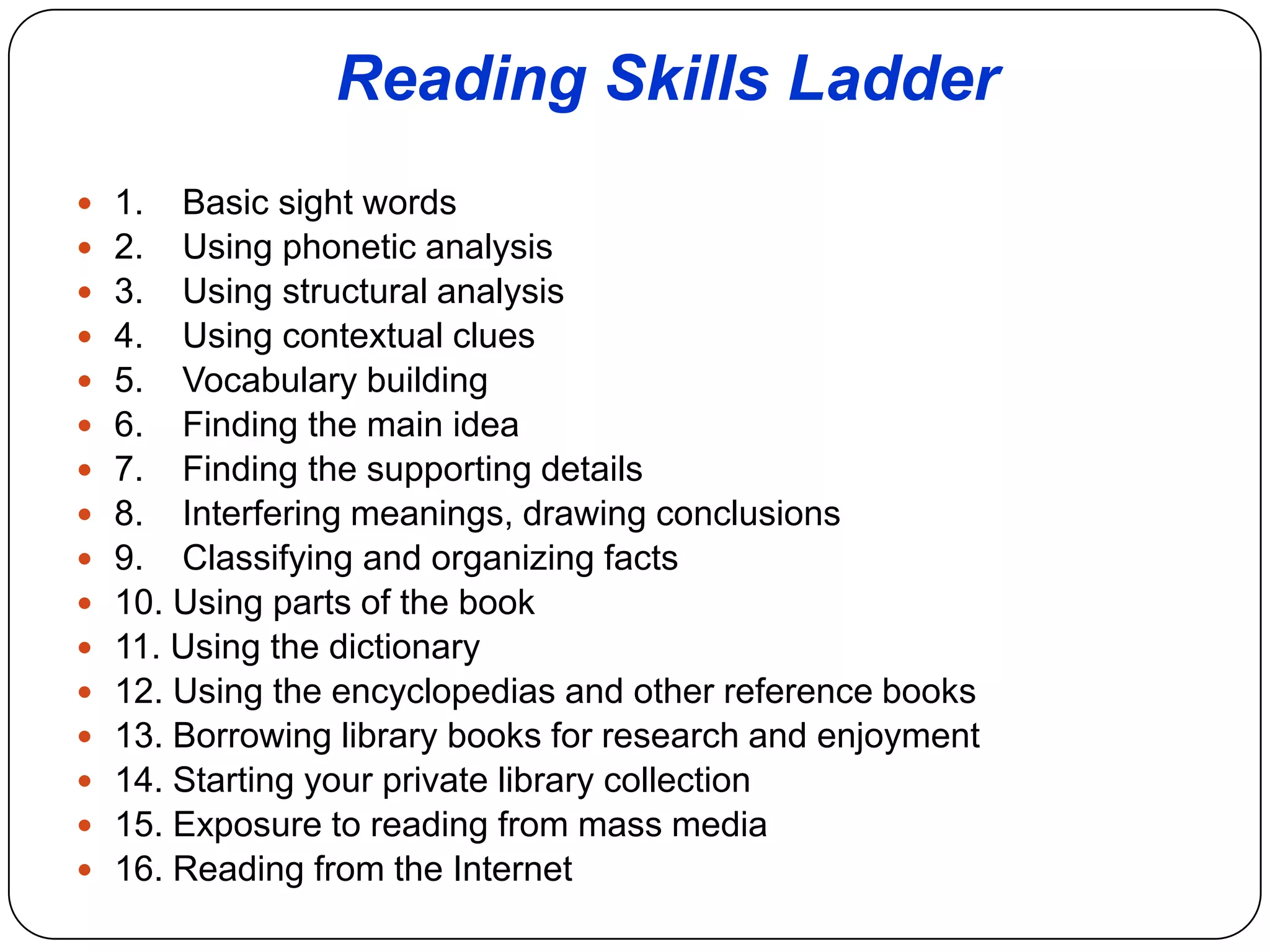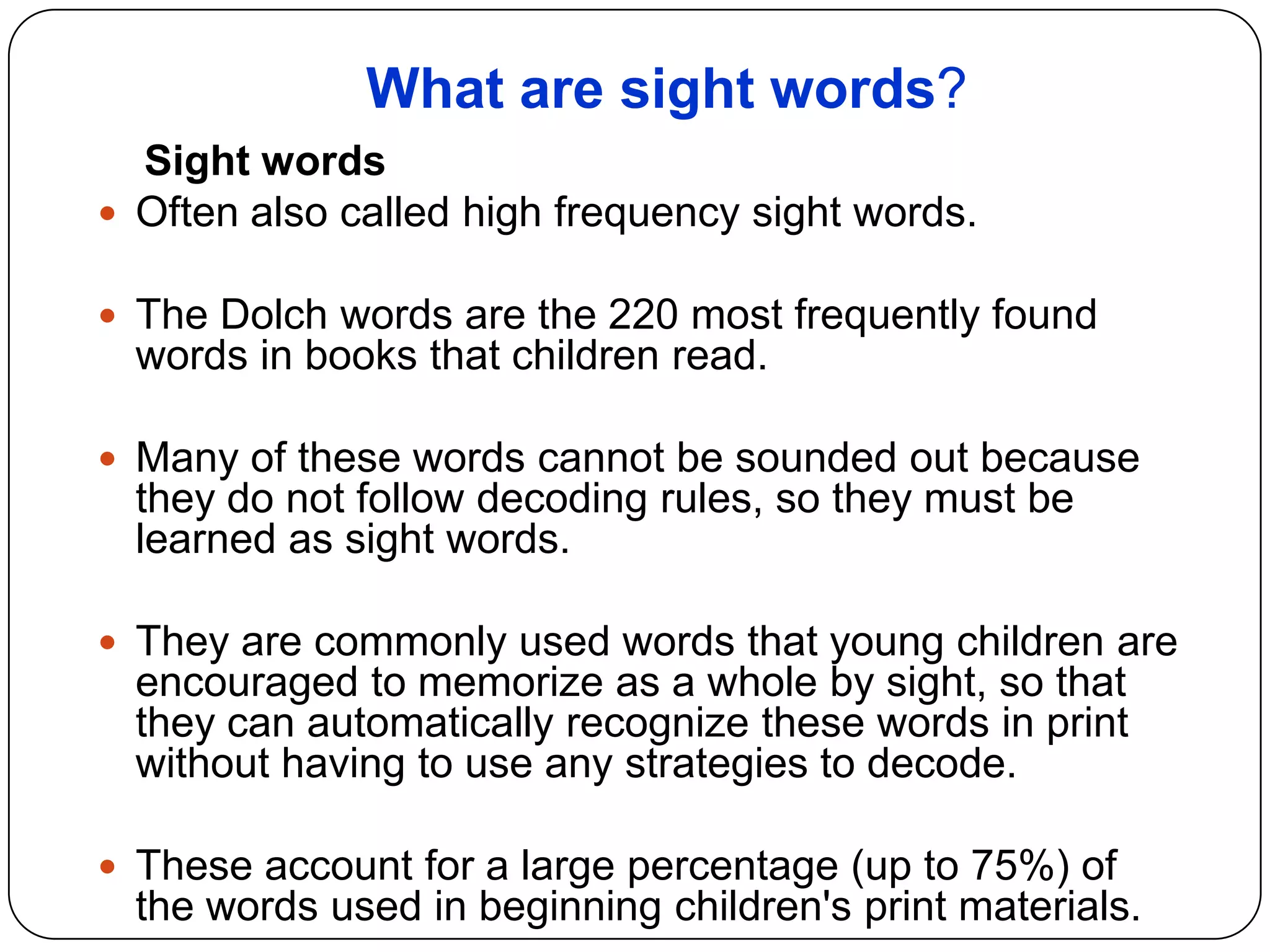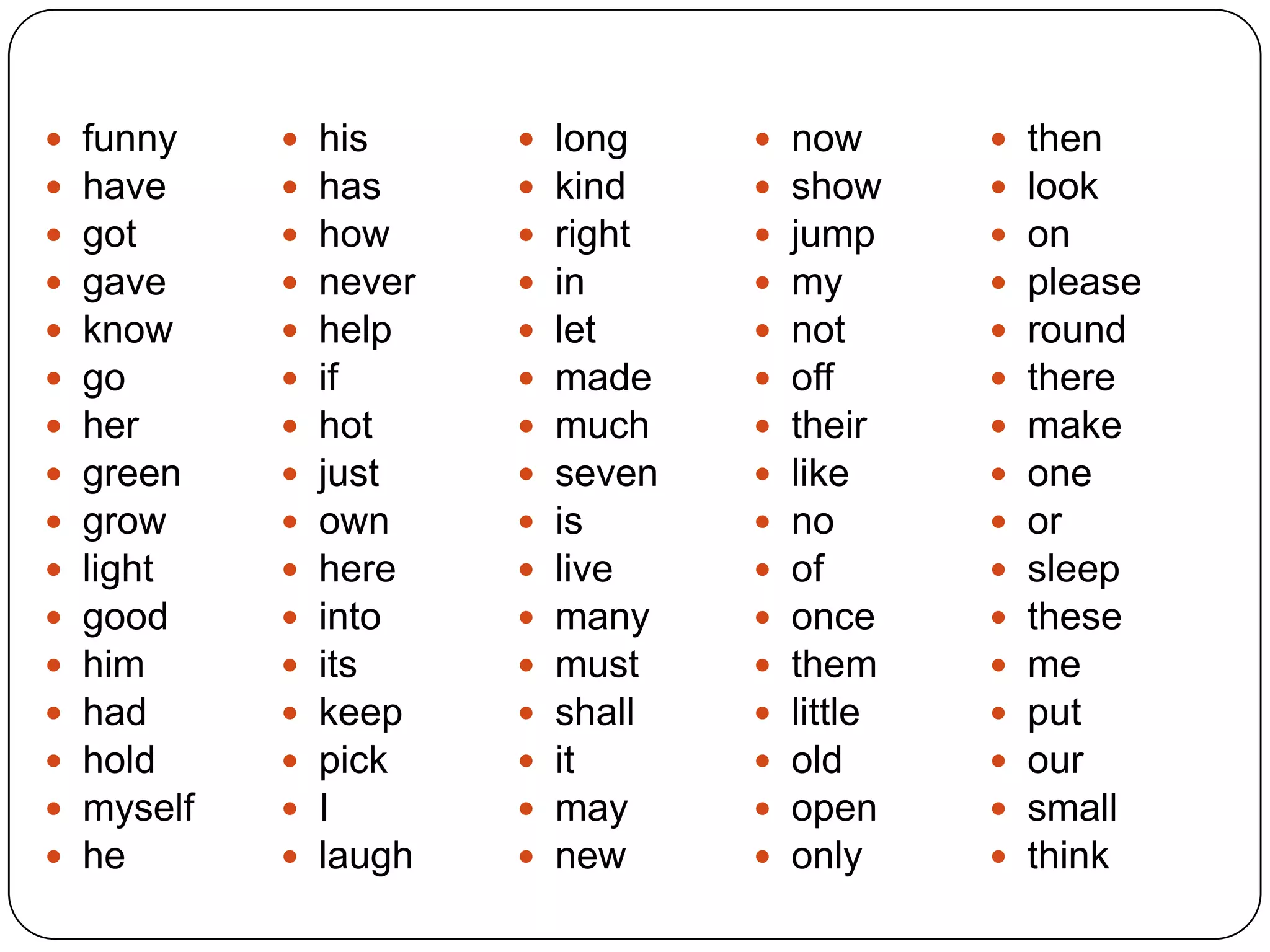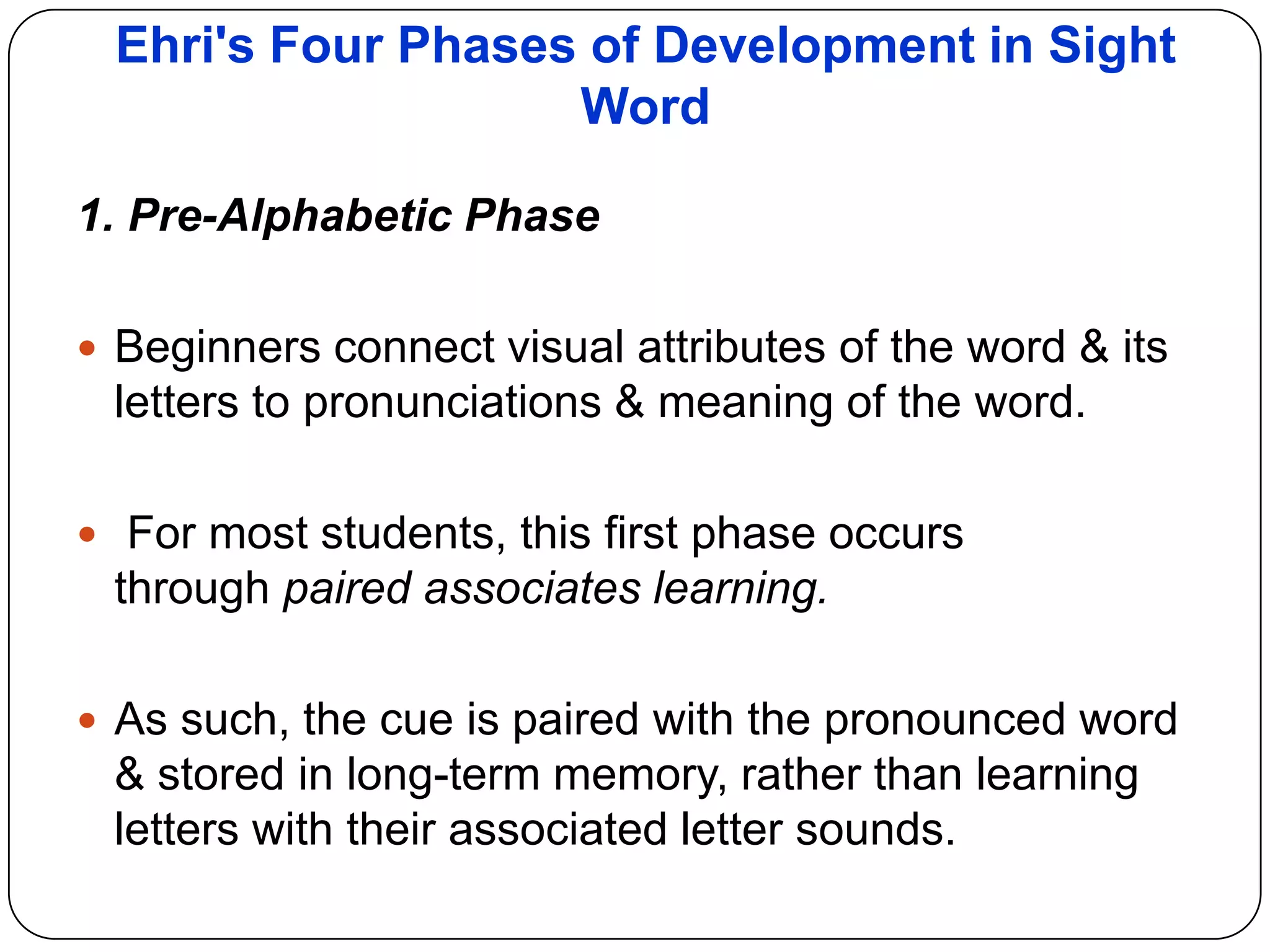The document describes Grace Goodell's Reading Skills Ladder, which outlines 16 reading skills in a progression. It starts with basic sight words and progresses to more advanced skills like using reference books, borrowing library books, reading from the internet, and exposure to reading from mass media. The document provides details on sight words, including what they are, examples from the Dolch word list, and Ehri's four phases of sight word development. It also explains phonetic analysis and provides examples of phonetic classifications.















